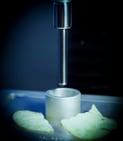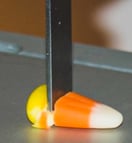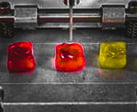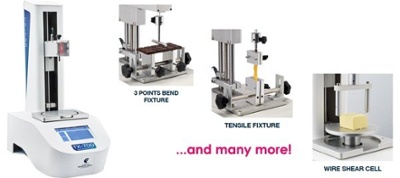Texture Analysis is a door into rooms where we evaluate things by the way they feel.
When it comes to food, texture plays a crucial role in our overall enjoyment and satisfaction. Think about it, have you ever bitten into a soggy or rubbery piece of food and been immediately turned off? I know I have. That's where texture analysis comes in.
Texture analysis is the process of measuring the physical properties of food that contribute to its texture such as hardness, chewiness, and stickiness. This science is used in the food industry to ensure consistency in products and to develop new and improved recipes.
People form expectations for the textures of their food based on past experiences. If a food does not meet these standards, they will not enjoy it no matter its other textural attributes.
To ensure customers like a product, the product needs to match their texture or sensory expectations. You can use a Texture Analysis to test products and find out how hard, soft, sticky, stringy, or tough they are before putting them on the store shelves.
What Properties are Measured in Texture Analysis
Texture analysis measures the force response of a sample to controlled deformation. These measurements can be correlated with specific sensory, feel, and other texture attributes. Some of the principal properties measured are:
- Hardness or the resistance of a material to permanent indentation.

- Stiffness is the resistance of a material to elastic deformation.
- Elasticity is the ability of a material to return to its original shape after deformation.
- Strength is related to the resistance of a material to fracture.
In addition, tests for smoothness, surface uniformity, and porosity are in the library of tests used.
Techniques or Methods Used to Get Texture Measurements
Some of the approaches used to develop a measurement of texture properties are:
- Toughness- Resistance to indentation by a blunt object.

- Springiness- The ability of a food to return to its original shape after deformation.
- Cohesiveness- Force required to separate a sample into individual parts.
- Chewiness- Simulate the resistance characteristics of the process of chewing
Texture testing techniques, methods, and related test fixtures can be grouped into three general categories.
- Bulk Analysis- This method measures the force required to deform a food in a bulk manner. This type of analysis is most commonly used to measure the hardness of a food.
- Compression or tension- This method measures the force required to deform a food in a compressed or tension state. This type of analysis is most commonly used to measure the spring
 iness of a food.
iness of a food. - Shear-This method measures the force required to deform a food in a shear state. This type of analysis is most commonly used to measure the cohesiveness of a food.
For each of these method categories, individual techniques have been developed that are applied to specific foods, such as butter, cheese, pasta, and cereal.
The test results are often presented in time-related line graphs as well as in data tables. Most testing equipment suppliers provide stand-alone instruments as well as supplementary test control and analytical software.
In addition, there are specific testing techniques that measure such things as stickiness, peel strength, and elongation force.
Texture Analysis in the Food Industry
Texture testing has applications across a wide range of food types, including baked goods, cereals, confectionaries, snacks, dairy, fruit, vegetables, gelatins, meat, poultry, fish, pasta, and even pet food.
The texture  is essential for ensuring consumer appeal and product success; from keeping cereals crispy to making butter easier to spread on toast.
is essential for ensuring consumer appeal and product success; from keeping cereals crispy to making butter easier to spread on toast.
Texture analysis is used in product development, quality control, and compliance with FDA standards. Some advantages of texture analysis include the ability to accurately measure and predict textural attributes, as well as the potential for cost savings by optimizing processing conditions.
Summary
In conclusion, texture analysis is an important tool in the food industry for measuring textural attributes, evaluating sensory perceptions, and predicting consumer acceptance.
Until now texture analysis has been one of the confounding mysteries of the testing world. We appreciate that you visited us and took the time to view this brief exposure to Texture Analysis. If you found it interesting and useful please share it with colleagues who have similar interests.
Still somewhat baffled,
Art
P.S. A factoid: The texture of a food can also affect our perception of its temperature? A creamy texture can make a food feel colder, while a crunchy texture can make it feel warmer.
P.P.S. We offer the advanced TX 700 system with attachments to analyze the texture of most products.
P.P.S Here is a short Demo of a Texture test,
To Subscribe, and keep up with these excursions through the sometimes mystical world of test equipment simply post your email at the upper right corner of this piece.



